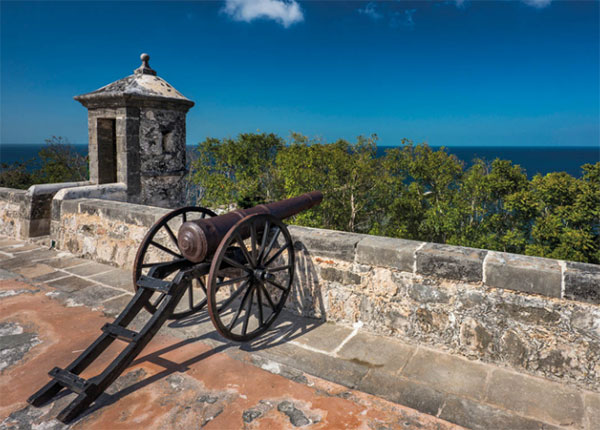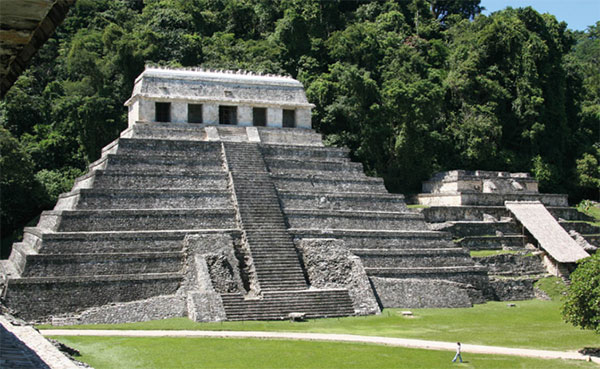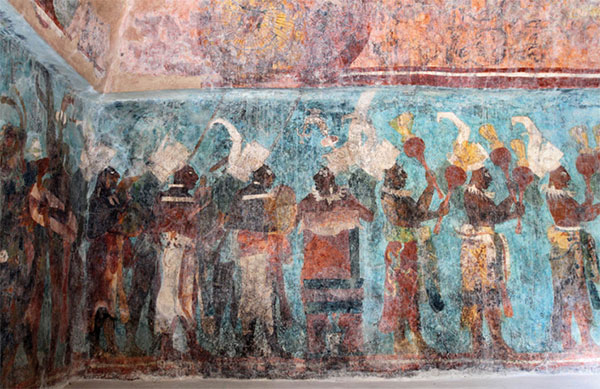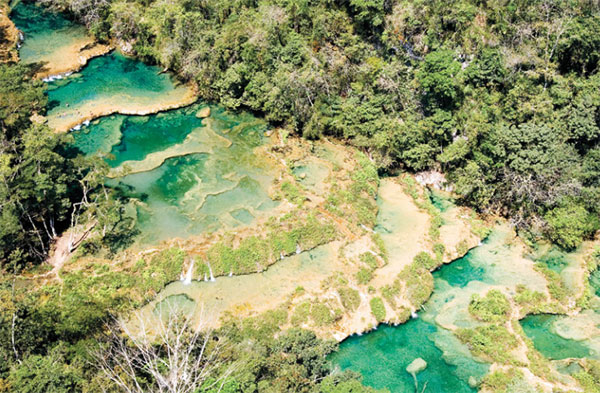Fact
Leftist Zapatista rebels have challenged the authorities’ control in Chiapas since 1994, leading to sporadic confrontations and violent incidents, but in recent years the situation has generally been one of a peaceful standoff, and rarely affects travelers to the region. That said, Mexican military checkpoints are quite common on roads in Chiapas, where your passport may be inspected.
The name Palenque simply means palisade in Spanish; its original name was perhaps Lakam-ha or ‘Big Water,’ although it was also known just as Bak or ‘the Bone Kingdom.’ It was the largest and most powerful Maya city in the Río Usumacinta region from around AD 400, but went into a precipitate decline around 800, when its ruling dynasty soon collapsed. It was the first Maya site to be investigated in the modern era, when Spanish priests began to explore it in the 1770s.
The ruins
Concealing its treasures almost until you stumble into them, the wall of jungle divides beyond the entrance to reveal the two most important and magnificent structures of the site: the pagoda-like tower complex of the palace and, to its right, the Temple of Inscriptions, a superb example of Classic Maya architecture, crowned with the characteristic roof comb.

A battlement over the Gulf of Mexico shoreline at Fuerte de San Miguel.
Getty Images
The temple is in fact a pyramid with a temple on top, which, at 26 meters (85ft) high, dominates the whole site. The hieroglyphic inscriptions on the walls – giving a detailed list of the kings of Palenque with their dates – give the temple its name. In 1952, Mexican archeologist Alberto Ruz Lhuillier discovered a sealed stone passageway that led to a burial chamber 25 meters (82ft) down, at the center of the pyramid. It contained the tomb of King Pakal (ruled AD 615–83), greatest of all Palenque’s rulers, wearing a mosaic jade death mask with shell and obsidian eye insets, and his body richly adorned with jade jewelry.
Pakal’s tomb and the rest of the Temple of Inscriptions are no longer open to visitors. However, in the site museum (by the entry road to the site, and included in the ticket) there is a full-size reconstruction of the tomb, the Sala Tumba de Pakal. Nearby, in the smaller Temple XIII, one can now visit the Tomb of the Red Queen, a three-chamber tomb where a sarcophogus of a woman was discovered in 1994, stained with unusually large amounts of the red cinnabar pigment that was used by the Maya to symbolize rebirth. She is believed to have been Pakal’s queen, Lady Tzakbu Ajaw.
Almost directly opposite the pyramid is the Palace, a complex of buildings with courtyards, passages, and tunnels, arranged around a unique, four-story, square-sided tower. The walls are embellished with finely detailed stucco panels, and its grassy courtyards have low walls decorated with hieroglyphics and impressive sculptures of giant human figures.
There is a ball court and another group of lesser temples in a grassy clearing to the north of the Palace, called the North Group. To the east are three important temples known as the Cross Group. All were built during the rule of Pakal’s son Kan B’alam II (684–702), in order to glorify himself, his father, and their dynasty. The imposing Temple of the Cross is the largest of the three, with a frieze inside its main temple showing Kan B’alam II receiving the attributes of kingship from his father. Many spectacular discoveries have been made within the last 25 years in the group of buildings just south of the Cross Plaza, known as the South Group.

The Temple of Inscriptions at Palenque.
iStock
The site itself lies about 8km (5 miles) from the town of Palenque, from where there are regular combi minibuses to the ruins. The museum is about 1km (0.6 miles) back from the site on the entry road, but you can also walk there from the main site, down a beautiful jungle path. The forest around Palenque is a national park, so visitors must pay a small park entry fee as well as the ruins admission charge.
Bonampak and Yaxchilán
The other two most important Maya sites in Chiapas, Bonampak and Yaxchilán, are located deep in the jungle near the Río Usumacinta, which marks the international border with Guatemala.
Bonampak ( [map] , 140km (87 miles) to the southwest, is reached from Palenque via a good paved road parallel to the Usumacinta valley. Take the turning at San Javier for Bonampak (13km/8 miles), stopping at the Lacandón village of Lacanjá after 9km (5.5 miles). Bonampak is in a Lacandón-run preserve, and only their vehicles are allowed to take you to the site. Lacanjá is also the best place to stay in the area, with several small campamentos of cabañas near the sparkling Lacanjá River. Bonampak was only ‘discovered’ by outsiders in 1946, and its vividly colored murals are the only large Maya paintings that have survived.
An essential part of the same trip is the journey to the larger Maya site of Yaxchilán ‚ [map] , spectacularly located on lofty slopes above the Usumacinta. To get there you must continue 20km (12.5 miles) past San Javier and then turn down a 19km (12-mile) road to the river village of Frontera Corozal, where local lanchero (boatmen’s) co-operatives offer boat trips to the ruins, which take about an hour each way. Agencies in Palenque offer tours to both sites.
Fact
When John L. Stephens first came to Palenque in 1840, the local prefect offered to sell him the ruins for US$1,500. However, at that time only Mexican citizens or their spouses could own land in Mexico, and he was unable to find a local woman whom he was prepared to marry.
One of Mexico’s most enjoyable and picturesque colonial towns, San Cristóbal de las Casas is located at an altitude of over 2,100 meters (6,900ft) and enjoys a beautifully temperate climate. It is highly popular with visitors, and has a cosmopolitan array of restaurants, cafes, and boutiques, as well as some wonderful historic hotels. San Cristóbal is especially atmospheric around the central plaza, which is framed by elegant buildings, including a stately Baroque cathedral. Na Bolom (daily 10am–5pm, tours in English at 4.30pm), a beautiful 19th-century house with surrounding gardens, is another prime attraction. Tour operators organize trips to the region’s Indigenous villages and natural places of interest.

A mural at Bonampak.
iStock

Semuc Champey, Guatemala.
Corrie Wingate/Apa Publications